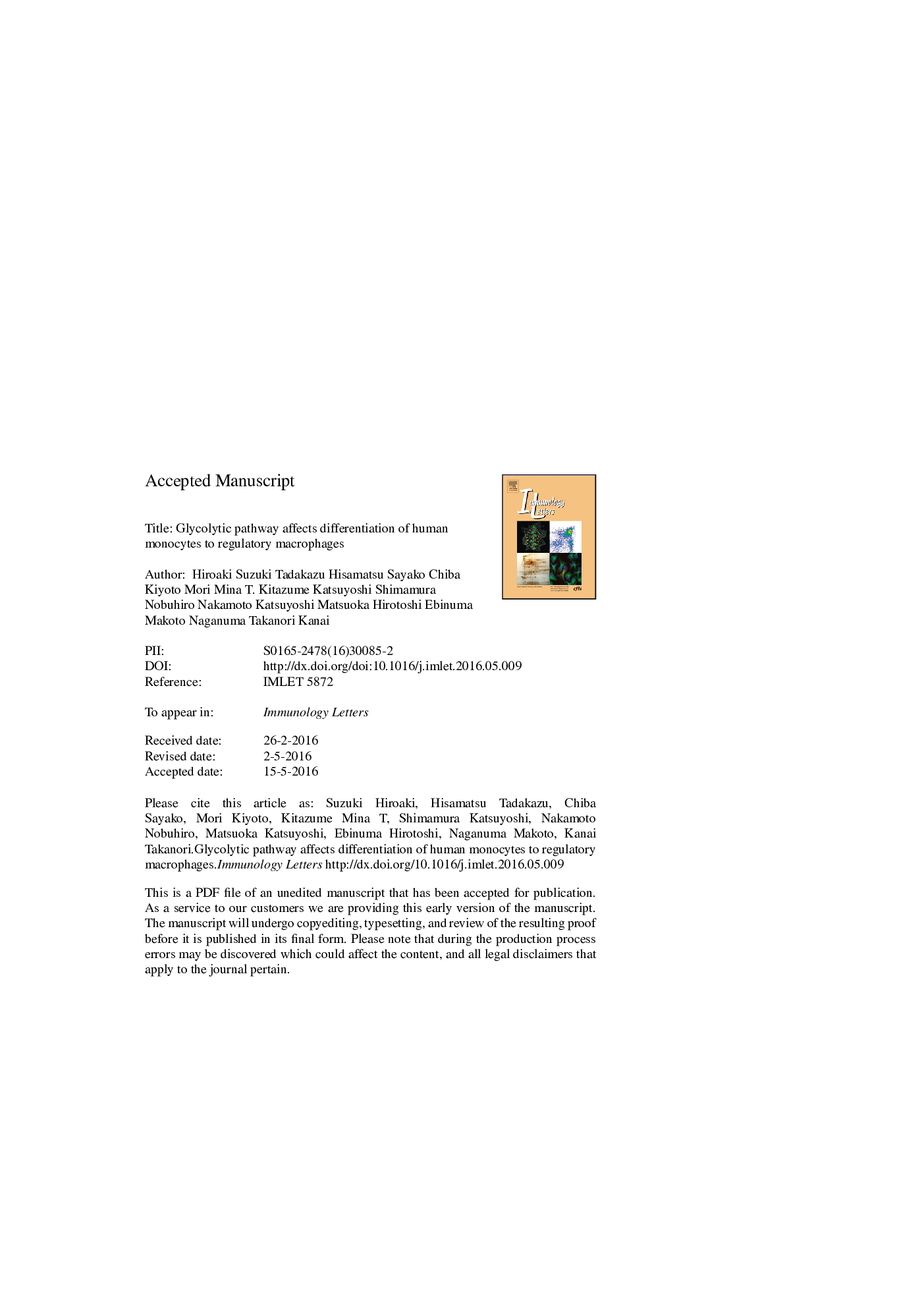| Article ID | Journal | Published Year | Pages | File Type |
|---|---|---|---|---|
| 6116964 | Immunology Letters | 2016 | 51 Pages |
Abstract
Cellular metabolic state and individual metabolites have been reported to regulate the functional phenotype of immune cells. Cytokine production by regulatory and inflammatory macrophages is thought to mainly involve fatty acid oxidation and glycolysis, respectively, which fuel mitochondrial oxidative phosphorylation. However, the association between metabolic pathways and the acquisition of specific macrophage phenotypes remains unclear. This study assessed the relationship between glycolysis and the differentiation of regulatory macrophages. Human monocytes derived from peripheral blood were cultured in vitro in the presence of macrophage colony-stimulating factor to yield regulatory macrophages (M-MÏs). M-MÏs had a regulatory macrophage phenotype and produced substantial IL-10 following stimulation with lipopolysaccharide. To analyze the role of glycolysis, glycolysis inhibitors (2-deoxy-d-glucose or dichloroacetate) were added during M-MÏ differentiation. These cells cultured with glycolysis inhibitors produced significantly lower amounts of IL-10, but produced significantly higher amounts of IL-6 compared to M-MÏs differentiated without glycolysis inhibitors. Such phenotypic change of M-MÏs differentiated with glycolysis inhibitors was associated with the alteration of the gene expression pattern related to macrophage differentiation, such as CSF1, MMP9 and VEGFA. M-MÏs differentiated with glycolysis inhibitors seemed to retain plasticity to become IL-10 producing cells. Furthermore, increased level of pyruvate in culture medium was found to partially reverse the effects of glycolysis inhibitors on cytokine production of M-MÏs. These results indicate the importance of glycolytic pathway in macrophage differentiation to a regulatory phenotype, and pyruvate may be one of the key metabolites in this process.
Keywords
DCALPSIDO1TCAVEGFA2-deoxy-d-glucoseIFN-γPDKMMP9CSF1M-CSF2-DGinterferon-gammaIndoleamine 2,3-dioxygenase 1DifferentiationHuman monocyteDichloroacetateVascular endothelial growth factor Alipopolysaccharidematrix metallopeptidase 9macrophage colony-stimulating factorcolony stimulating factor 1Glycolytic pathwayPyruvate dehydrogenase kinase
Related Topics
Life Sciences
Immunology and Microbiology
Immunology
Authors
Hiroaki Suzuki, Tadakazu Hisamatsu, Sayako Chiba, Kiyoto Mori, Mina T. Kitazume, Katsuyoshi Shimamura, Nobuhiro Nakamoto, Katsuyoshi Matsuoka, Hirotoshi Ebinuma, Makoto Naganuma, Takanori Kanai,
